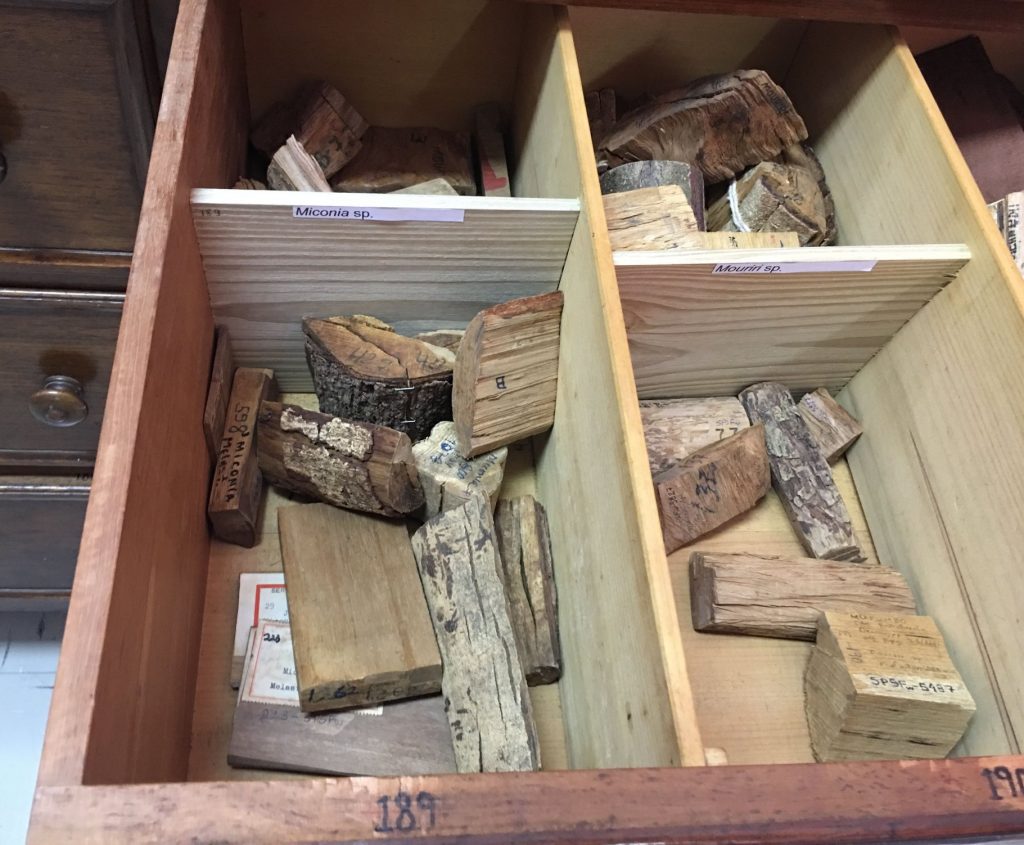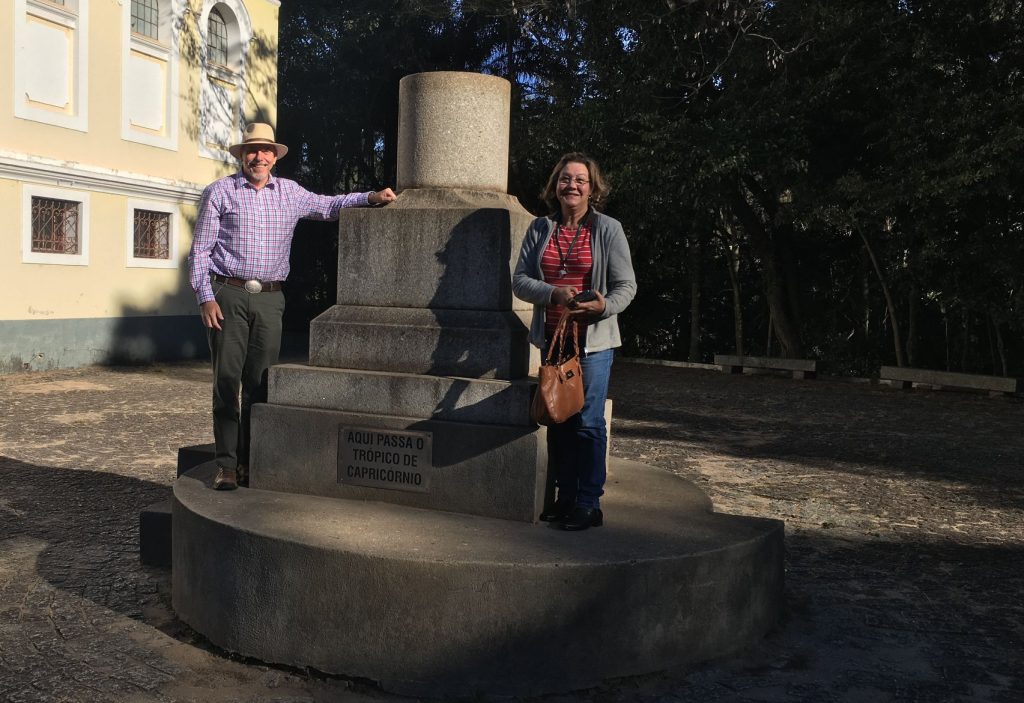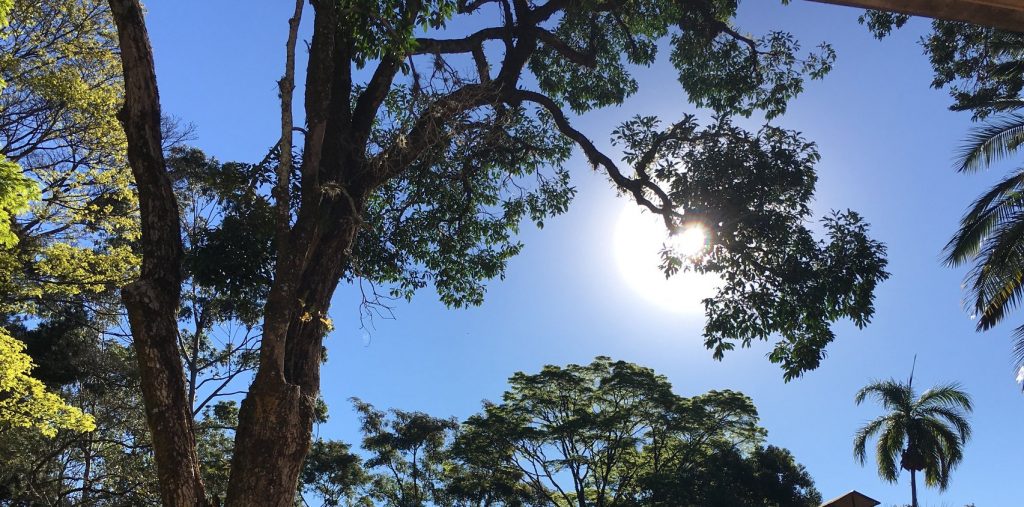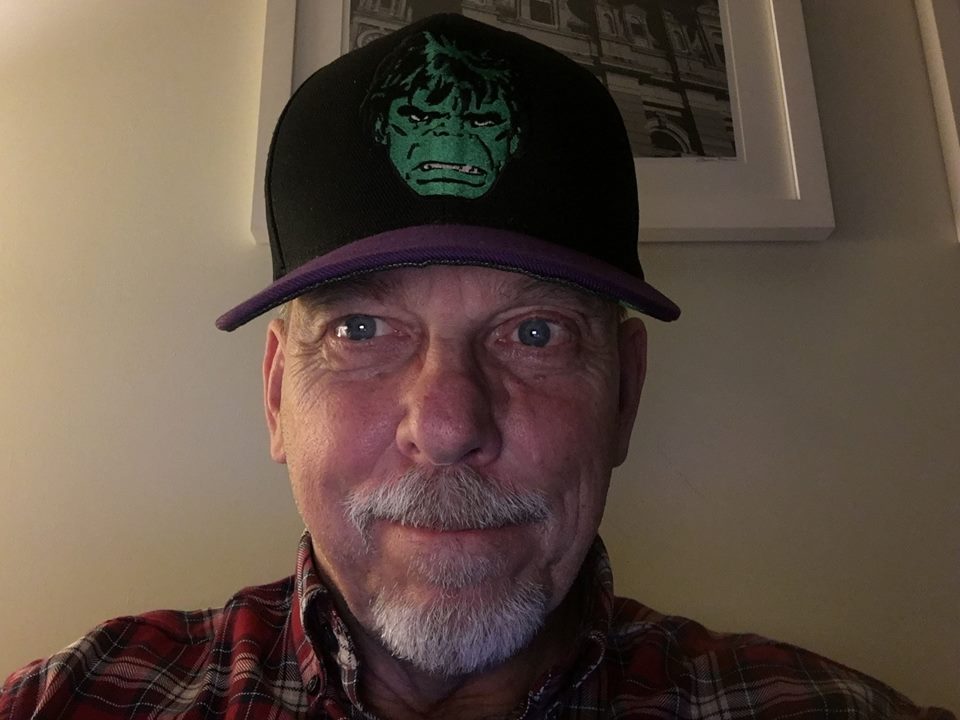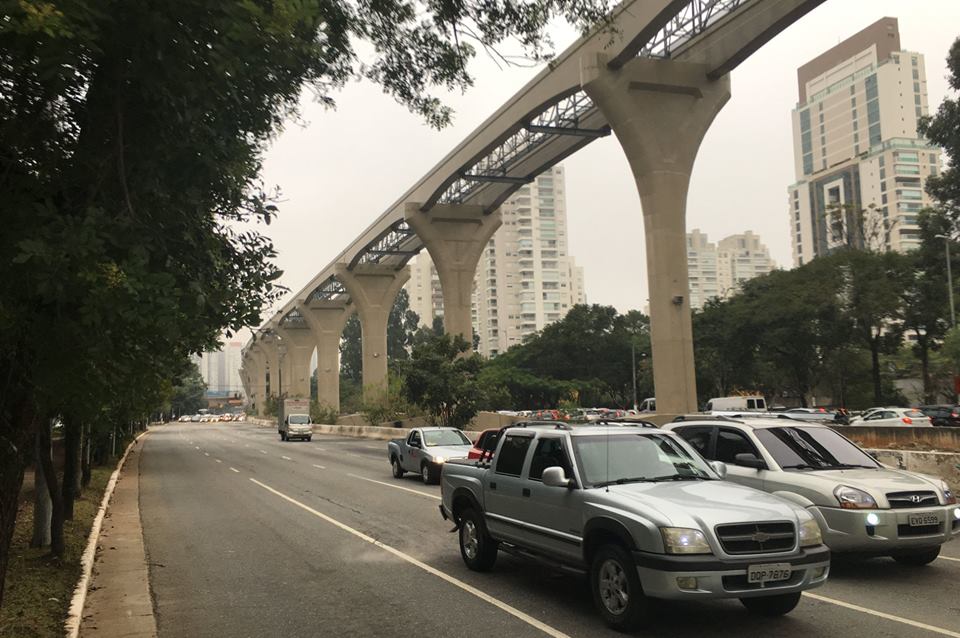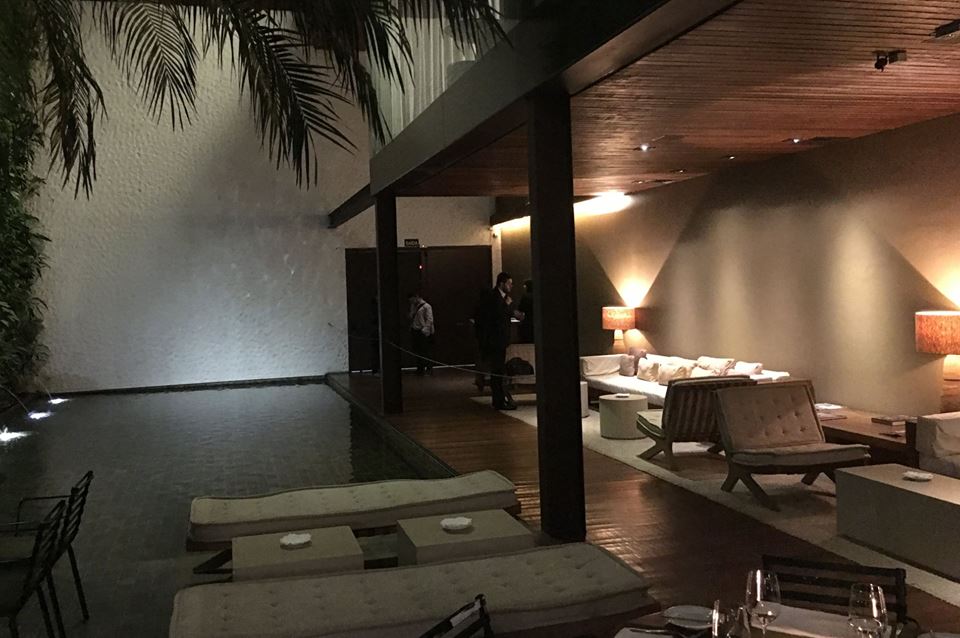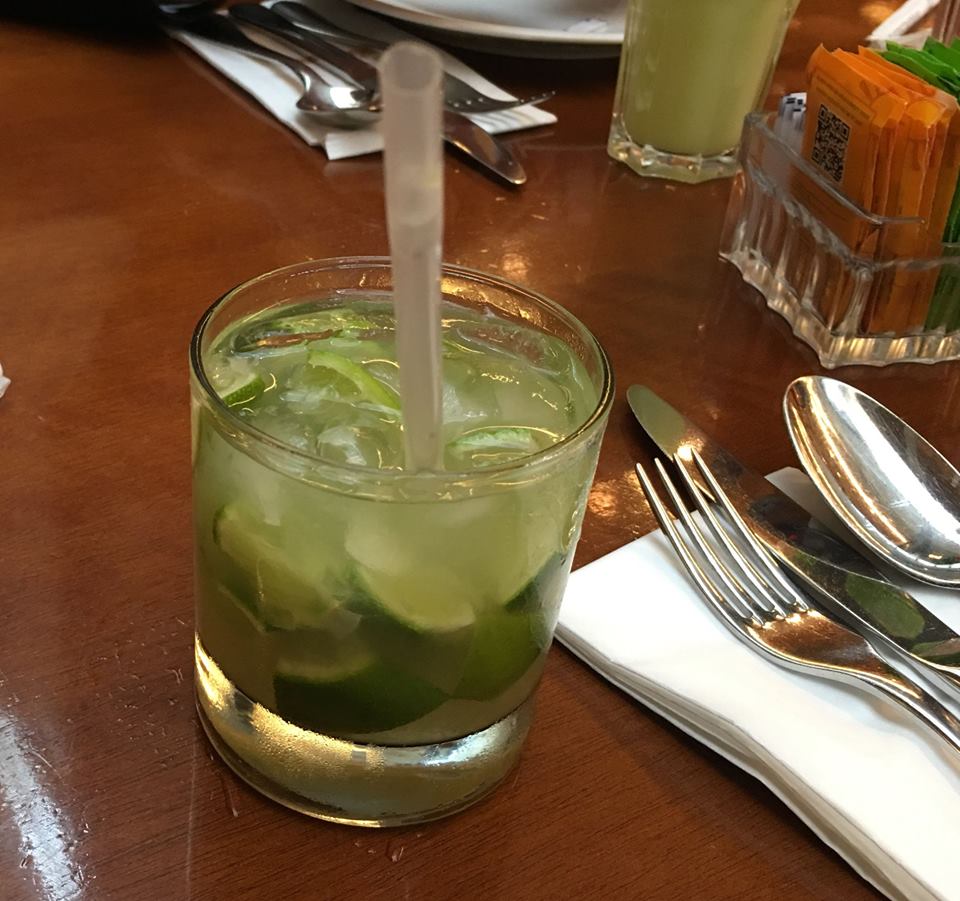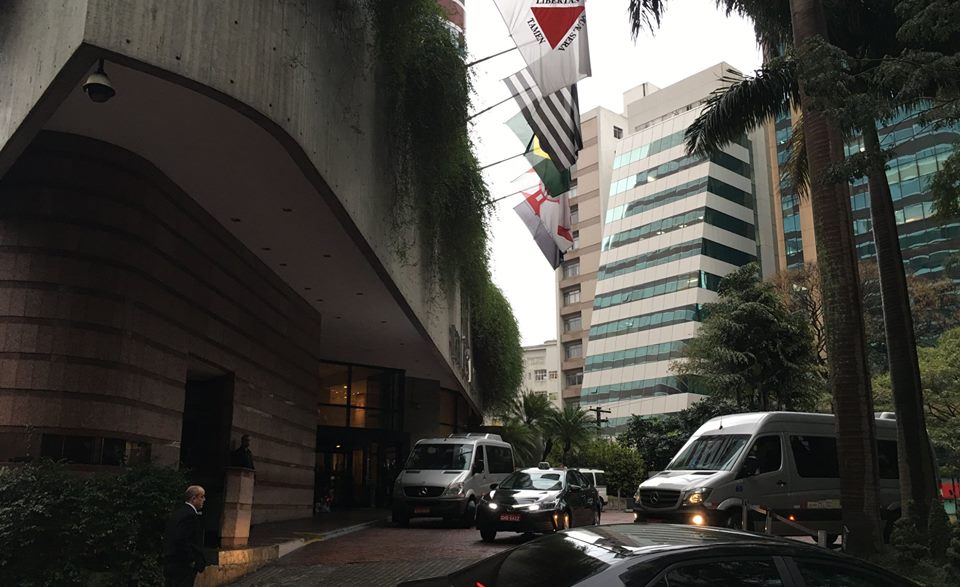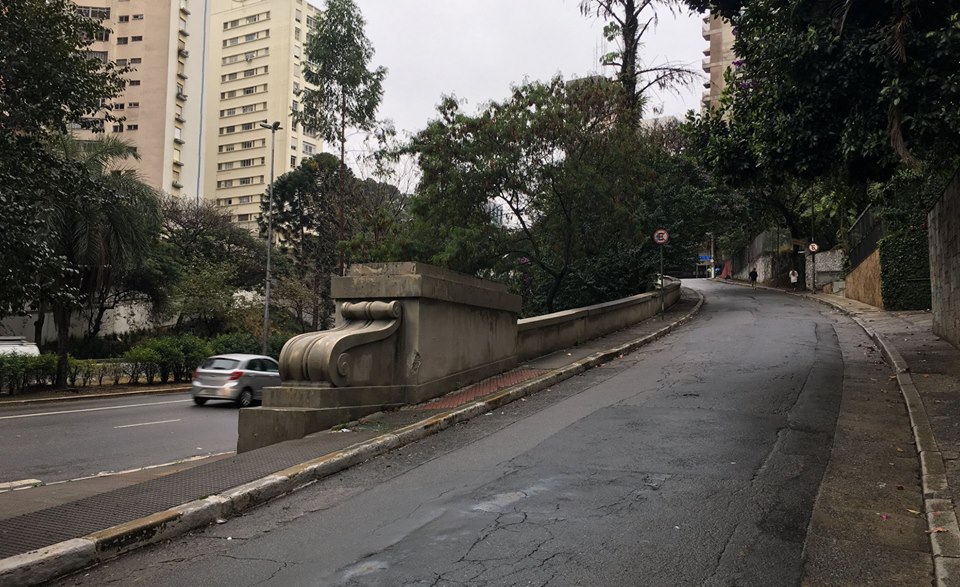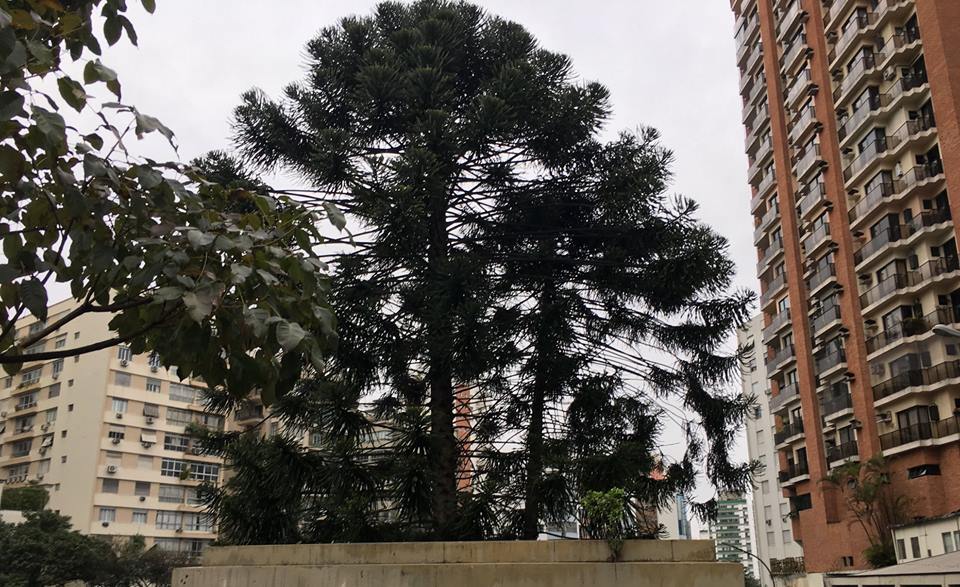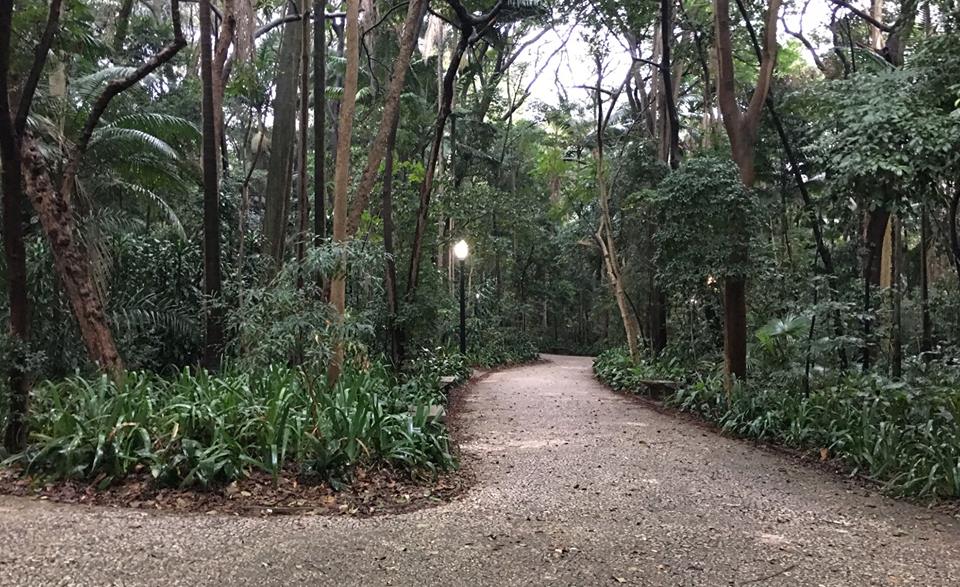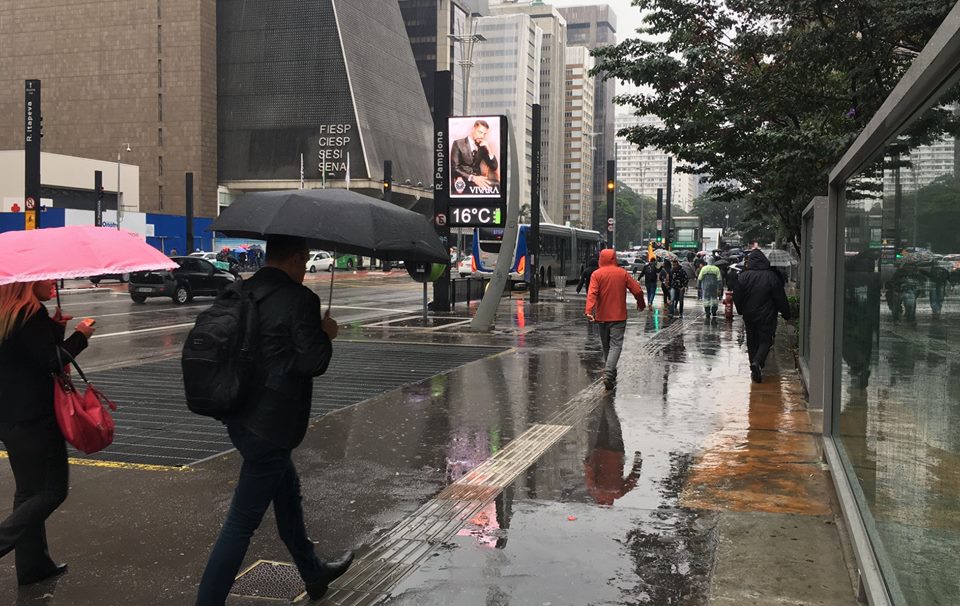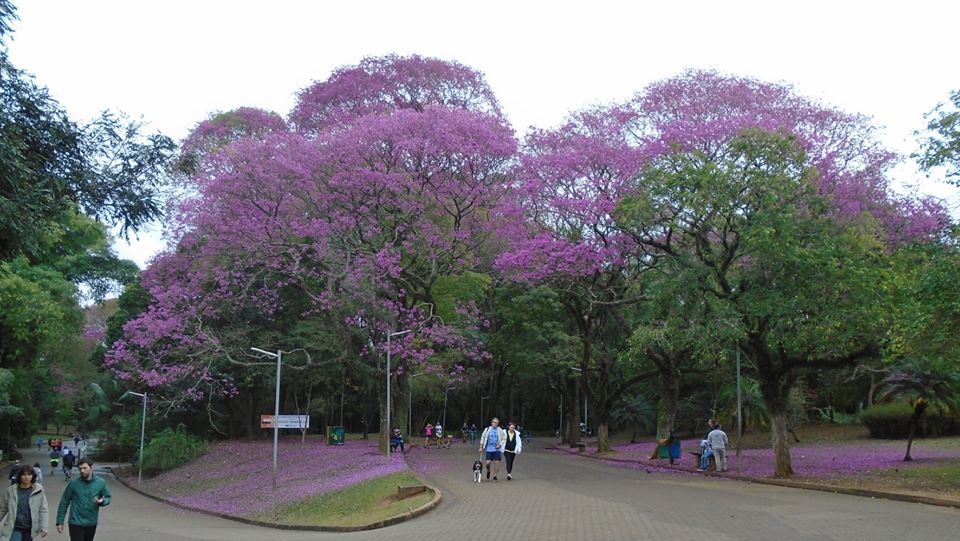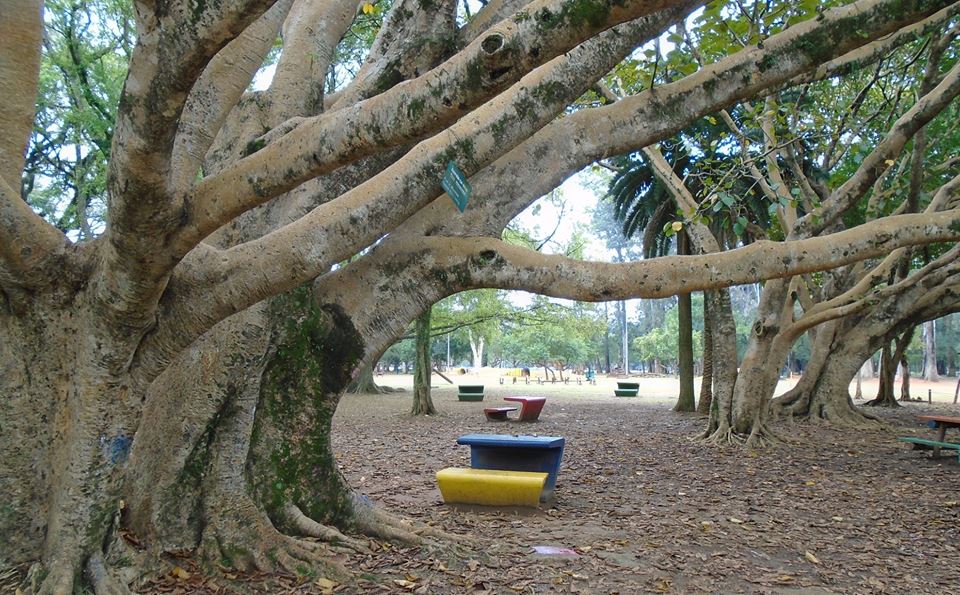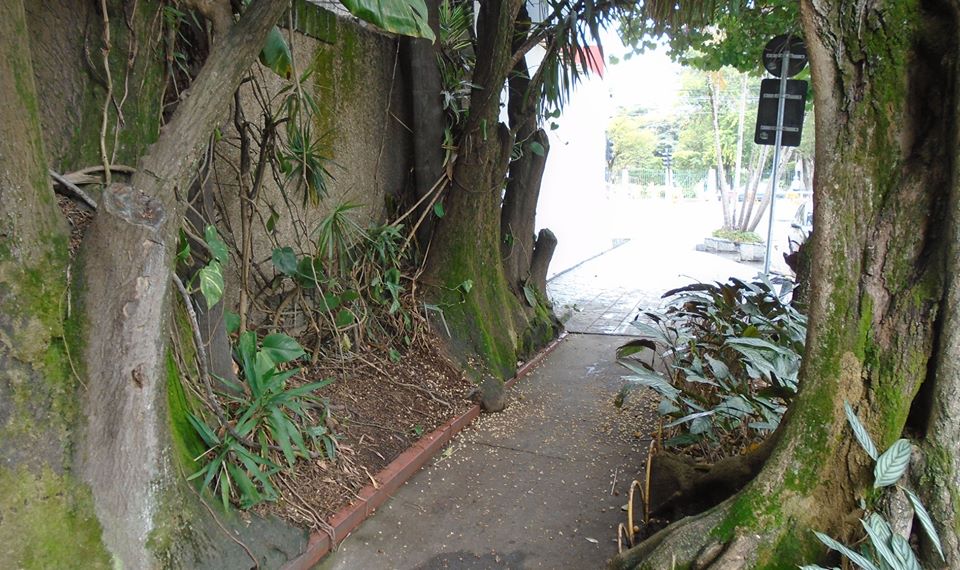Simple Idea with Worldwide Impact.
She got the idea during a visit to the dermatologist. The hand-held magnifying camera that the doctor used to examine her skin could would as well to magnify and record tiny cells in wood that could be used to identify the species. Her employers were not very enthusiastic about this new idea, so she found out where to buy one of the devices and bought it herself. She showed me the original. Simple, cheap but effective.
Since she – from the Instituto Florestal do Estado de São Paulo (São Paulo Forest Service) returned from her IVLP “Promoting Legal Sourcing of Wood and Wood Products,” in 2011, her connections and cooperation with American researchers and authorities has deepened and thickened. She is in weekly contact with the USDA Forest Products Laboratory in Madison, Wisconsin and has been invited to meet and do training with the U.S. Department of Justice and Border Patrol.
Stop Illegal Cutting and Selling Wood
The goal of all this is to stop the illegal harvesting and export of rare species of trees, and the deforestation, ecological devastation and release of greenhouse gases that goes with it. Many species of Brazilian tropical hardwood are so hard and dense that they do not float in water. This makes them ideal for flooring and some aspects of construction where very dense wood is needed. Add to this their extraordinary beauty – some brilliant vermilion, others almost pure black, still others with patterns that can only be called art – Brazilian tropical hardwoods are among the most beautiful and sought-after woods in the world.
Unfortunately, many of the most popular species are not being grown sustainably and/or are being harvested in ways that damage the local ecology. The – castanha (chestnut) — the tree that produces Brazil nuts, locally called castanhas-do-pará – for example, produces a beautiful hard and dark wood. It is a magnificent tree, that can grow to 160 feet high. The Brazil nuts it produces are among the most valuable non-wood product from the forest. This tree, however, is very hard to regenerate. Its ecology requires not completely understood complexities of an intact forest. Attempts to propagate them artificially have not been very successful. So, Brazilian authorities have made the harvest of castanha — illegal in most cases. Yet this wood regularly appears for sale, usually called something else. It is hard for non-specialists to identify them with certainty and harder still to prove their identity.
This is why she needed the erstwhile dermatological device. She had been working with the São Paulo environmental police and the Federal highway patrol to impound cargos of illegally harvested wood. To identify the species and it provenance, she used something like a jewelers’ loop. She could identify the species by the grain and the cells. But São Paulo is a big state and Brazil is a big country and there was only one and she was it.
Training the Police, Stopping the Traffic
She has done training from police all over Brazil and participated in symposia all over the world, talking about her techniques. Much of the training for police officers involves spotting potential violations and taking proper samples, so that they now roughly what to do. Training experts to identify species beyond a reasonable doubt, however, which is required to impound the wood or prosecute offenders, takes a long time. It is not something an average police officer can be expected to master. The skin camera, modified to look at wood, can take pictures and transmit them via Internet to her lab, where experts can decide. They also have a visual record. If it turns out that the species is not authorized, the cargo can be impounded. In that case, the police take a sample of the wood, label it appropriately with reference to the pictures, and send the sample to the lab, where it is catalogued and secured in case there is a court case.
She says that they so far have never been asked to produce the actual wood sample. The pictures have sufficed. One bad reason for this is that the real culprits are often not found or taken to court. They hire a truck driver does not know the origin of the wood he is hauling. When the truck is stopped, the real crooks disappear and write it off as cost of doing business. In this respect it is like drug smugglers, and there is in fact overlap in the business. Drugs are sometimes hidden in trucks carrying wood from the Amazon, which is also near drug producing areas of Columbia. The way that you can roughly tell the drug truck from the ordinary wood truck is that the drug truck often has a chase car, with armed thugs – a kind of evil “Smokey and the Bandit” scenario. It is dangerous for the police to stop this sort of truck. She has done more than forty training for police, including in the Amazon, reaching thousands of officers. They do not allow her to go along when these sorts of encounters are likely.
Experts have tried to apply IT and AI process to identifying wood, and she has been cooperating with American experts, especially with the Center for Wood Anatomy Research at the USDA Forest Products Laboratory, but it is currently more art than science. She said that it might work okay in the USA, where we have fewer major species to identify, but in the very diverse tropical and subtropical forests of Brazil, it has still proved to be a bridge too far. I asked about DNA analysis. This is also something for the future. Many of tropical hardwoods have not been sequenced adequately and the testing currently takes too long. When a truck is stopped on a Brazilian highway, the police legally have two hours before they decide to impound the cargo or let it pass. There is no mobile DNA test that can do that at this time. It is also easier to do DNA tests from leaves than from wood. The field, however is developing rapidly.
What did IVLP do For Her and for the USA
The United States amended the Lacey Act in 2008, which makes it unlawful to import into the United States any plant (or plant product) that was illegally harvested. It is in everyone’s interest to stop the illegal product before it ever moves AND – consequently – to remove much of the profit and incentive for those would exploit, deforest and denude large areas of the world. It is possible for buyers in the USA to be innocently duped. This creates problems for them, the court system, the cops and everybody except the crooks who deliberately broke the law. Better to stop that rock before it starts rolling.
She has been a thought leader and influential participant in the science and application of the science to protect the integrity of tropical forests in Brazil, in American and worldwide. She credits her IVLP experience with making this happen as it did. Not only did it do the usual great things of plugging her into American and international networks, where ideas propagate, but it also provided her the credulity to be heard.
Recall that she had to buy the hand-held dermatological equipment with her own money. She just did not have the clout to make it happen more expeditiously. On her return, things were already different for her and success built on success. This is especially important for her as a woman. The men she worked with had theretofore been quicker to shunt her aside. With her bigger profile came more influence and the forests of Brazil and the world have been the beneficiaries.
Please note – it is not a secret who goes on IVLP visits and nobody I talked to so far would object to being known, in fact they have been proud of their participation and I share the notes with them, but I replaced names with pronouns since there is no need to put all that on social media.
Pictures show pao Brasil – the Brazilian wood that gave the name to the country. It is very beautiful and that was its curse. The Atlantic forests were largely denuded centuries ago. Next shows some of the wood slices at the laboratory. Yes, the place has a kind of 19th Century feel. Picture #4 shows the Tropic of Capricorn. It runs right through the forest park and around the world, but that spot is evidently most important. Last is just a nice picture of the sun and the trees.



